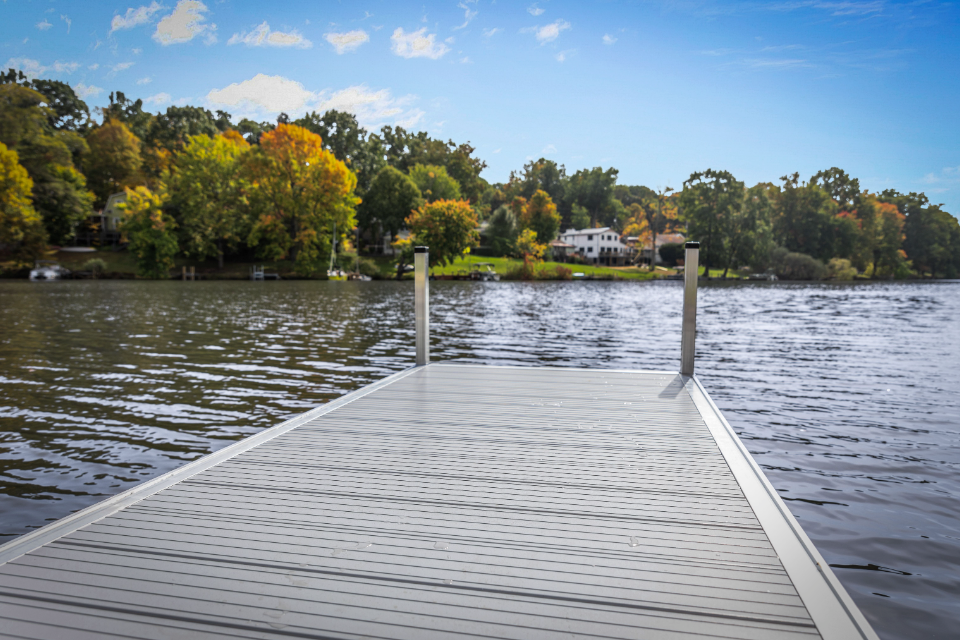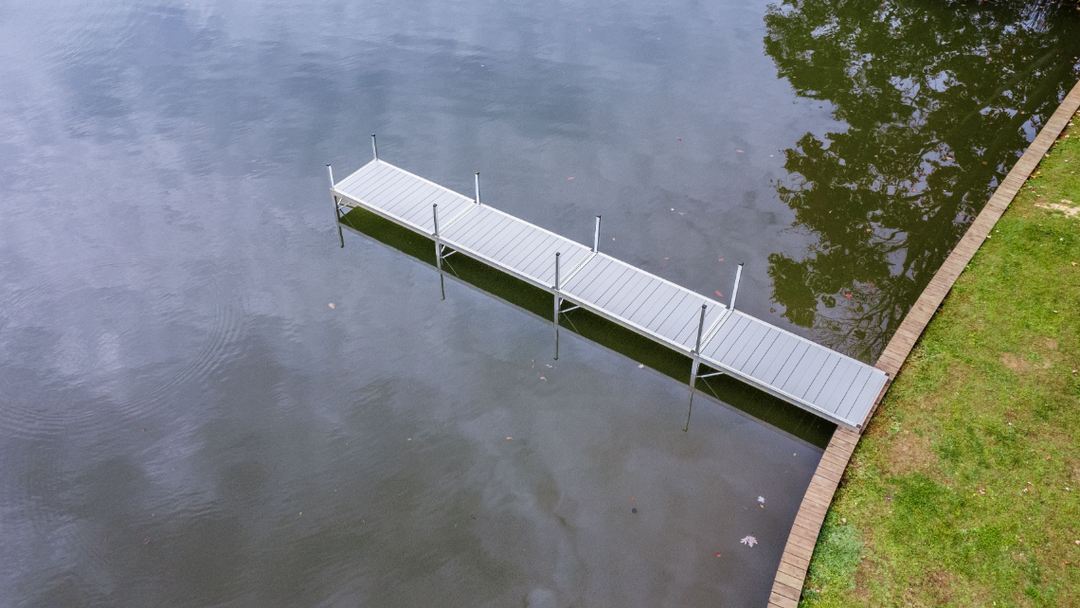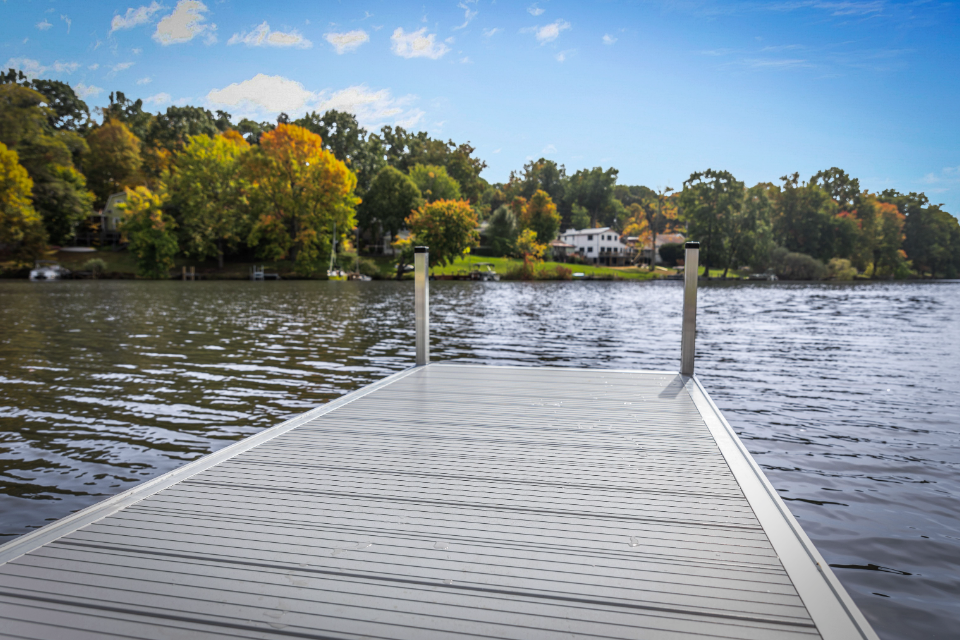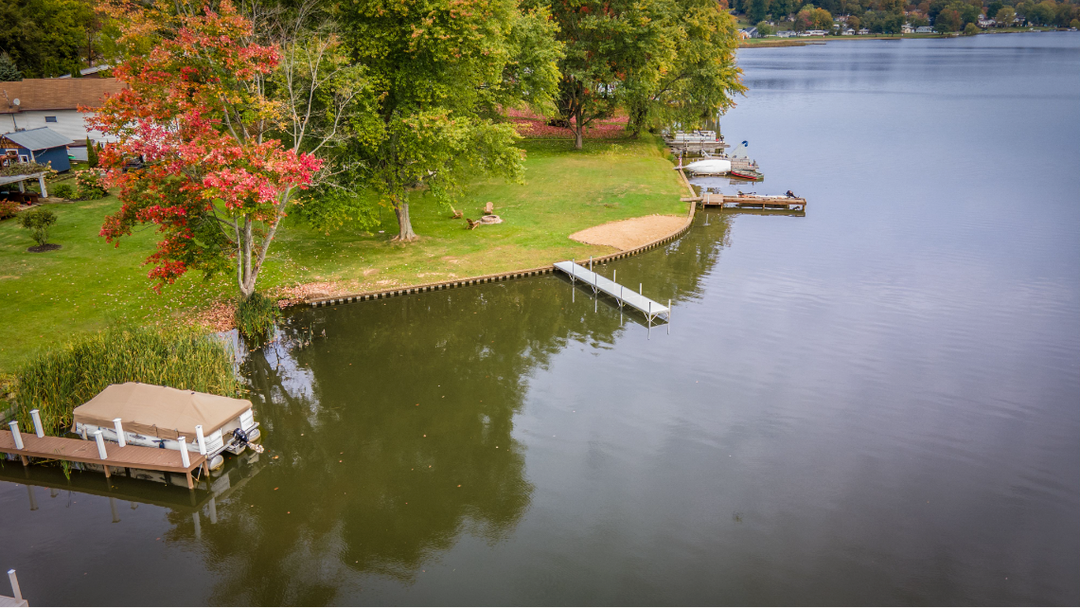Ultimate Pond Dock Comparison: X8 Kit Dock Vs DIY Project
Introduction:
Pond docks have become increasingly popular among waterfront property owners, with two notable choices standing out: the user-friendly X8 Kit Dock and the traditional DIY approach.
The X8 Kit Dock is praised for its easy installation and durable design. Its modular components allow customization to meet specific needs, offering a hassle-free solution for enhancing pond spaces.
Conversely, the DIY pond dock method, involving independent material sourcing and construction, appeals to hands-on property owners seeking a high degree of personalization. However, it demands more time, effort, and construction expertise.
The growing popularity of using pond docks reflects people's enthusiasm for maximizing their experiences. Whether someone chooses the convenience of the X8 model or embraces the hands on approach of a do it yourself project, the main goal is to construct a dock that fulfills its purpose and enhances the attractiveness of the pond. Ultimately, choosing between these options depends on preferences and skill levels. Finding the right balance between convenience and adding a personal touch.
Overview of Pond Dock Options
Traditional DIY Pond Docks
Pond docks are additions to waterfront properties offering a space for leisure unwinding and easy access to the water. One popular option for those considering pond dock choices is to take the DIY (Do It Yourself) route. This approach allows property owners to create a customized dock that suits their needs and personal style.
DIY pond docks typically involve gathering materials and building the dock from scratch. Builders often use materials like wood, PVC pipes, or recycled items depending on their preferences and budget. The design possibilities for DIY pond docks are endless. From floating platforms to elaborate structures with multiple levels, railings, and added features.
The construction process for a DIY pond dock involves several key steps. First and foremost, we need to consider the design phase of the dock. This involves thinking about factors like the size, shape, and layout of the dock. It's crucial to keep in mind the purpose of the dock, water depth, and compliance with regulations when making plans. This initial step sets the foundation for a compliant structure.
After completing the design phase selecting materials becomes extremely important to ensure that the dock is sturdy and long lasting. While pressure treated lumber is commonly used for its ability to resist water damage there are options like composite materials or PVC pipes. The choice of materials depends on factors such as durability, maintenance requirements and specific conditions, in the pond environment.
Ease of Installation
Challenges of DIY Pond Dock Building
Building a pond dock using the DIY (Do It Yourself) method allows for a personalization. It also presents various challenges and complexities and requires a significant amount of time investment. Here are some key considerations and potential difficulties associated with the installation of a traditional DIY pond dock:
- Skill Level and Expertise: DIY pond dock projects can be challenging for individuals without experience in carpentry or construction. It's important to have a level of construction knowledge and skills to accurately execute the project.
- Design Complexity: The complexity of DIY pond docks can vary depending on the chosen design. From floating platforms to intricate structures with multiple components, some designs may require a higher level of expertise and careful planning.
- Materials Handling: Transporting and handling materials for dock construction can be physically demanding, particularly if the dock is large or if heavy materials, like pressure treated lumber, are involved. This may require assistance from multiple individuals.
- Need for Assistance: Some aspects of dock construction, such as moving and securing large sections, may require assistance from multiple individuals. Coordinating the efforts of a team adds another layer of complexity to the project.
While DIY pond dock projects offer plenty of customization options, it's crucial for individuals to realistically assess their skill level well as consider the complexity of their chosen design and the amount of time and physical effort required. To tackle these challenges smoothly, some property owners choose fabricated dock kits instead.
Durability and Maintenance
Maintenance of DIY Pond Docks
When waterfront property owners decide to build their pond dock, they need to consider the durability and maintenance aspects. While DIY docks offer the advantage of customization, they may pose issues in terms of long term durability and upkeep when compared to manufactured docks or kits.
Durability Issues with DIY Pond Docks:
- The durability of a DIY pond dock greatly relies on the quality of materials used. If you choose lower grade materials or neglect treatment, the dock may become susceptible, to rot, decay, or warping over time.
- DIY docks are exposed to elements, like water, sunlight, and changing temperatures. Without protection, these factors can speed up wear and tea,r which could eventually lead to problems.
- One important aspect to consider is the floatation system of pond docks. It may encounter durability challenges that need attention and proper maintenance. Improperly sealed or protected floatation devices can be prone to waterlogging or damage, affecting the dock's buoyancy and stability.
Maintenance Requirements for DIY Pond Docks:
- Maintenance: Owners of DIY pond docks should regularly inspect their structures to spot any signs of wear, damage, or deterioration. This involves checking the condition of the deck, support system, and all hardware used in its construction.
- Preservation and Protection: To ensure lasting durability, it's important to apply treatments and sealants to the wood or other materials utilized in building the dock. These measures safeguard against moisture, UV rays, and fungal decay.
- Cleaning: It is necessary to clean the docks surface to remove debris, algae, and other substances that may accumulate. This not only helps maintain its appeal but also preserves its structural integrity.
- Structural Repairs: Address any structural issues promptly. This might involve replacing any damaged parts, strengthening areas, or making adjustments to ensure the dock remains stable.
- Preventing Corrosion: If the construction includes metal hardware, applying corrosion treatments can help prevent rust and prolong the lifespan of the dock.
To sum it up while do it yourself pond docks can be sturdy when constructed and maintained properly they may require attention and upkeep compared to manufactured alternatives. Property owners should carefully consider the advantages of customization, against the long term maintenance commitments when deciding on the suitable dock solution, for their specific needs..
Customization and Flexibility
Limitations in DIY Dock Design
While DIY (Do-It-Yourself) pond dock projects offer a high level of personalization, there are inherent limitations in customization and flexibility that individuals should consider. These limitations stem from factors such as skill level, available materials, and adherence to safety standards. Here are some key aspects to be aware of when it comes to the potential constraints of DIY dock design:
- Material Limitations: DIY builders may be constrained by the availability of materials in their local area. This can affect both the aesthetics and functionality of the dock. Limited material options may restrict choices in decking, support structures, and finishing touches.
- Floatation System Considerations: Achieving the right buoyancy and stability for the dock is critical. DIY projects may face challenges in implementing sophisticated floatation systems that are both effective and compliant with safety standards.
- Considerations for Costs: When working on a DIY project, it's important to keep budget constraints in mind. Certain materials or features may not be readily available due to limitations, which can affect the design and customization options. DIYers often find themselves trying to strike a balance between their vision and what they can afford.
- Time Constraints: DIY projects, those with designs can require a significant time commitment. Limited time availability might restrict the level of customization, leading builders to choose quicker solutions instead.
To sum it up, while DIY pond docks provide room for personalization it's essential for builders to be aware of limitations. Finding the balance between creativity and adhering to safety standards, as well as realistically assessing skill levels and available resources, is vital for a successful and functional DIY dock project.
Cost Analysis
Costs of a DIY Pond Dock Project
The expenses related to undertaking a DIY (Do It Yourself) pond dock project can differ greatly due to factors such as the design you choose, the materials used, local market prices, and the availability of tools. Let's break down the costs associated with a DIY pond dock project and briefly compare them to commercially manufactured alternatives.
Materials:
Decking costs will vary depending on the material you choose, such as pressure treated lumber or composite options. Typically, prices can range from $2 to $10 per foot. When it comes to the frame and supports of your dock, the cost will depend on your material preferences for posts, beams, and joists. A popular choice is pressure treated lumber, which typically ranges from $1 to $5 per linear foot. For the floatation system of your dock, the cost of devices like barrels or foam filled containers may vary. On average, you can expect to spend around $20 to $50 per float. Don't forget about the hardware! Nails, screws, brackets, and other necessary items can add up in terms of cost. Depending on the size and complexity of your dock project, hardware expenses typically fall within the range of $50 to $200.
Tools:
To carry out construction work, it is crucial to have tools like a saw, drill, screwdriver, and measuring tools. If you don't already have these tools, purchasing them can increase the cost by a hundred dollars.
Conclusion
In summary, the comparison between the X8 Kit Dock and DIY pond docks underscores distinctions in ease of installation, durability, customization, and cost.
The X8 Kit Dock stands out for its user-friendly design and straightforward installation. Offering a convenient alternative with modular components for customization, it strikes a balance between flexibility and ease. Professionally manufactured, it is durable requiring less maintenance compared to certain DIY docks. Despite a higher initial cost, the X8 Kit Dock proves cost-effective due to reduced time, effort, and potential long-term maintenance.
Conversely, DIY pond docks involve hands-on construction but may challenge those with limited experience. Installation ease varies with design and skill level. Durability relies on material quality and construction, demanding regular maintenance. While highly customizable, DIY projects may be limited by skill, materials, and safety considerations. Potential cost savings come with fluctuating expenses based on choices in materials, tools, and potential labor.
In conclusion, the decision between the X8 Kit Dock and a DIY pond dock depends on individual preferences. The X8 Kit Dock offers a convenient, durable, and customizable solution, appealing to those seeking professional craftsmanship without DIY complexities.
Explore options on the X8 Docks website for detailed specifications, testimonials, and purchases, promising an enhanced waterfront experience with a reliable, customizable dock solution.





